
Enjoy this photo collage of Hawaiian sea and wildlife that call the North Shore of Oahu home! You may see many of these beautiful creatures during your dive or from the boat on the way to and from the dive site (with the exception of the Hawaiian Owl, which is a rare sighting anywhere in Hawai'i). Be sure to look in the water at the Haleiwa Harbor while at the dock, we have lots of “visitors” here as well!
The family's connection with their ancestors (kūpuna) is held strong in this spiritual relationship daily practice with their protector, their 'Aumāku. Some examples of 'Aumākua may include the shark (manō), the owl (pueo), the sea turtle (honu), the eel (puhi), the octopus (he'e), the honeycreeper bird ('i'iwi), the cowry (leho), a plant (mea kanu), a rock (pōhaku) or a cloud (ao).

Hawaiian Owl (Pueo)
Asio flammeus sandwichensis
The Hawaiian 'Aumāku is a spiritual belief of both a heavenly and earthly nature involving animals, sea life and even plants. 'Aumāku is thought to be an ancestor that has crossed over to the afterlife and then come back in a physical form from nature to provide for the Hawaiian family as a guardian, a spiritual guide, and communicator.
The relationship between the Hawaiian family and their 'Aumāku is personal and also reciprocal as the 'Aumāku tends to the family, the Hawaiian family tends to and respects the 'Aumāku in a role of worship with prayer and offerings. As with any elder, 'Aumāku will also discipline when warranted, and the family member must repent and ask forgiveness for any wrong doing.

Hawaiian Spinner Dolphins
Stenella longirostris
The spinner dolphin (Stenella longirostris) is a small dolphin found in off-shore tropical waters around the world. It is famous for its acrobatic displays in which it rotates around its longitudinal axis as it leaps through the air. It is a member of the family Delphinidae of toothed whales.
Due to the spinner dolphin foraging and feeding at night, in certain regions, such as Hawaii and northern Brazil, dolphins spend the daytime resting in shallow bays near deep water.
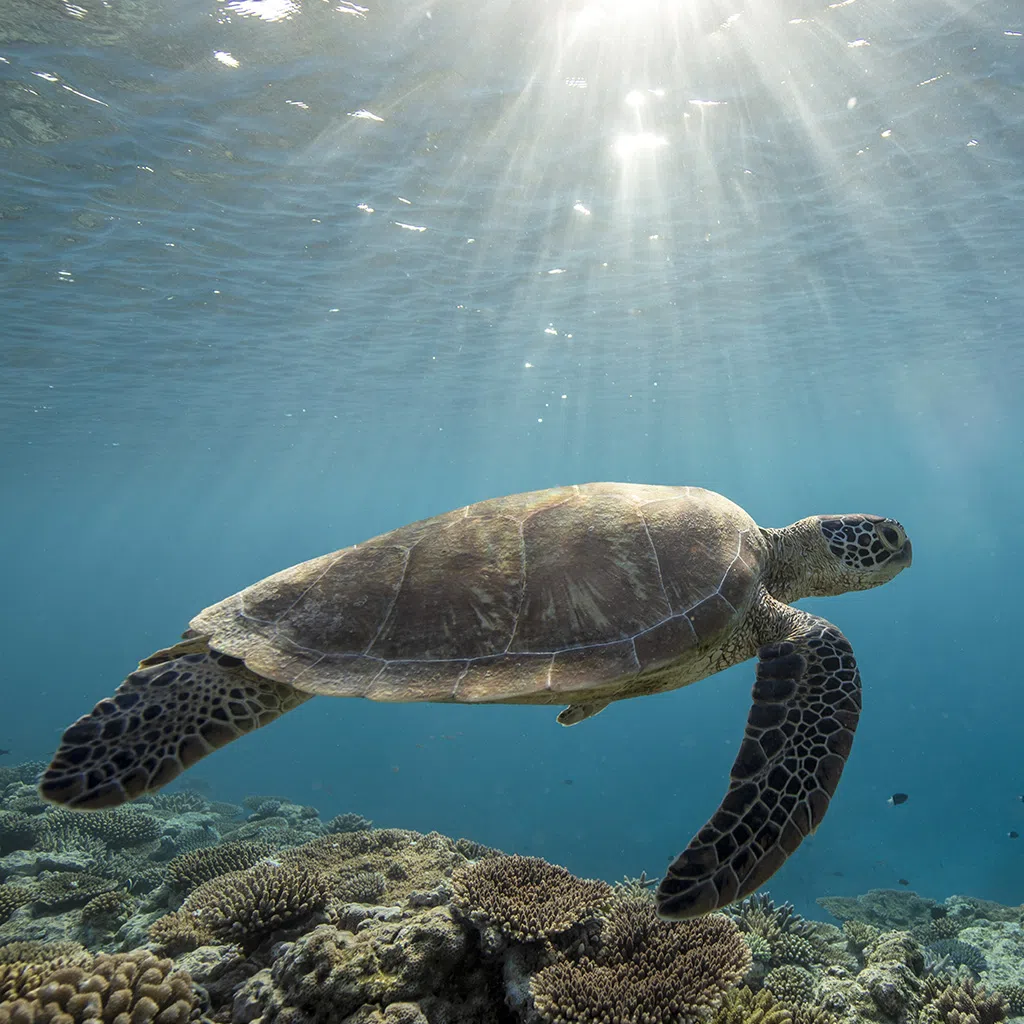
Hawaiian Green Sea Turtle
Chelonia mydas
Also known as the green turtle, is a species of large sea turtle of the family Cheloniidae. It is the only species in the genus Chelonia. Its range extends throughout tropical and subtropical seas around the world, with two distinct populations in the Atlantic and Pacific Oceans, but it is also found in the Indian Ocean.
Green sea turtles migrate long distances between feeding sites and nesting sites; some swim more than 1,600 mi (2,600 km) to reach their spawning grounds.
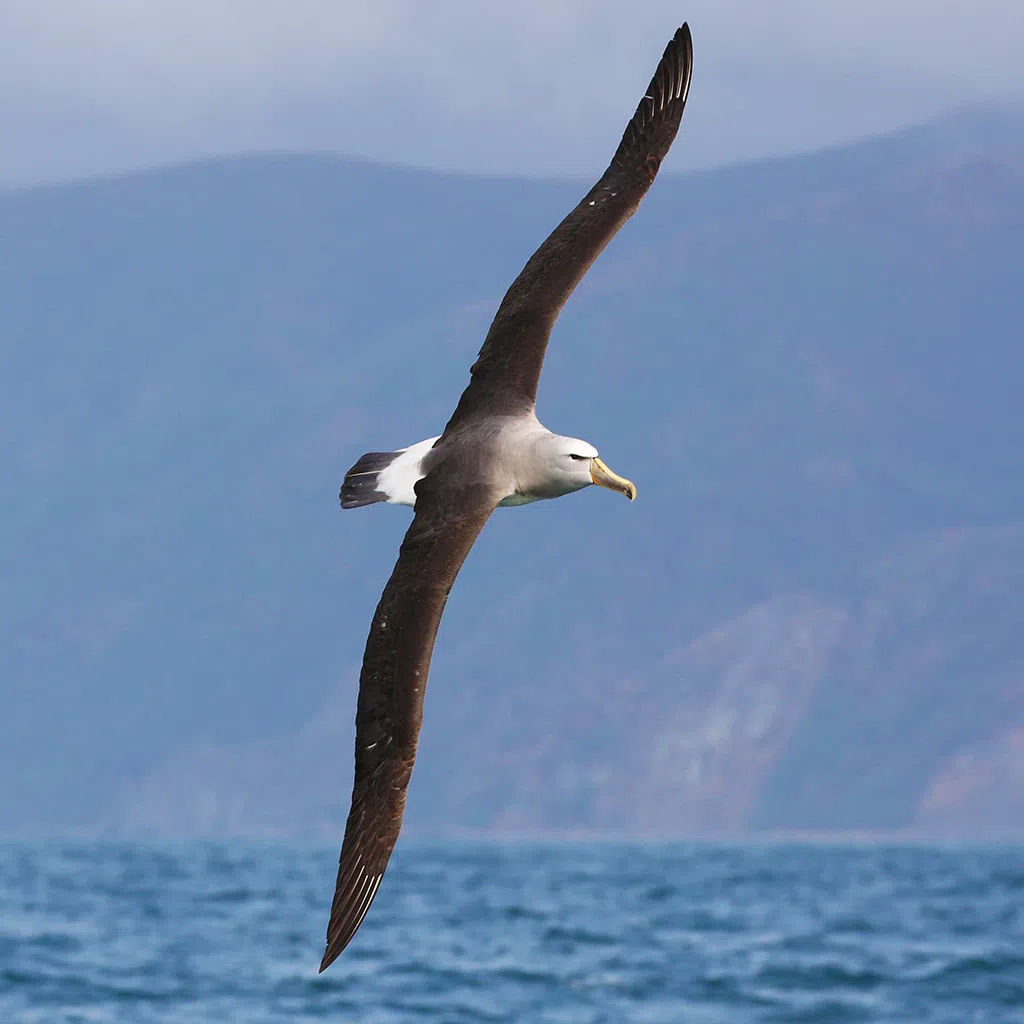
Albatross
Diomedeidae
Albatrosses, of the biological family Diomedeidae, are large seabirds related to the procellariids, storm petrels, and diving petrels in the order Procellariiformes (the tubenoses). They are highly efficient in the air, using dynamic soaring and slope soaring to cover great distances with little exertion. They feed on squid, fish, and krill by either scavenging, surface seizing, or diving.
The wingspans of the largest great albatrosses are the largest of any bird, exceeding 11.2 ft (3.40 m). Of the 22 species of albatrosses recognised by the IUCN, 21 are listed as at some level of concern; two species are critically endangered, seven species are endangered, six species are near threatened, and six species are vulnerable.
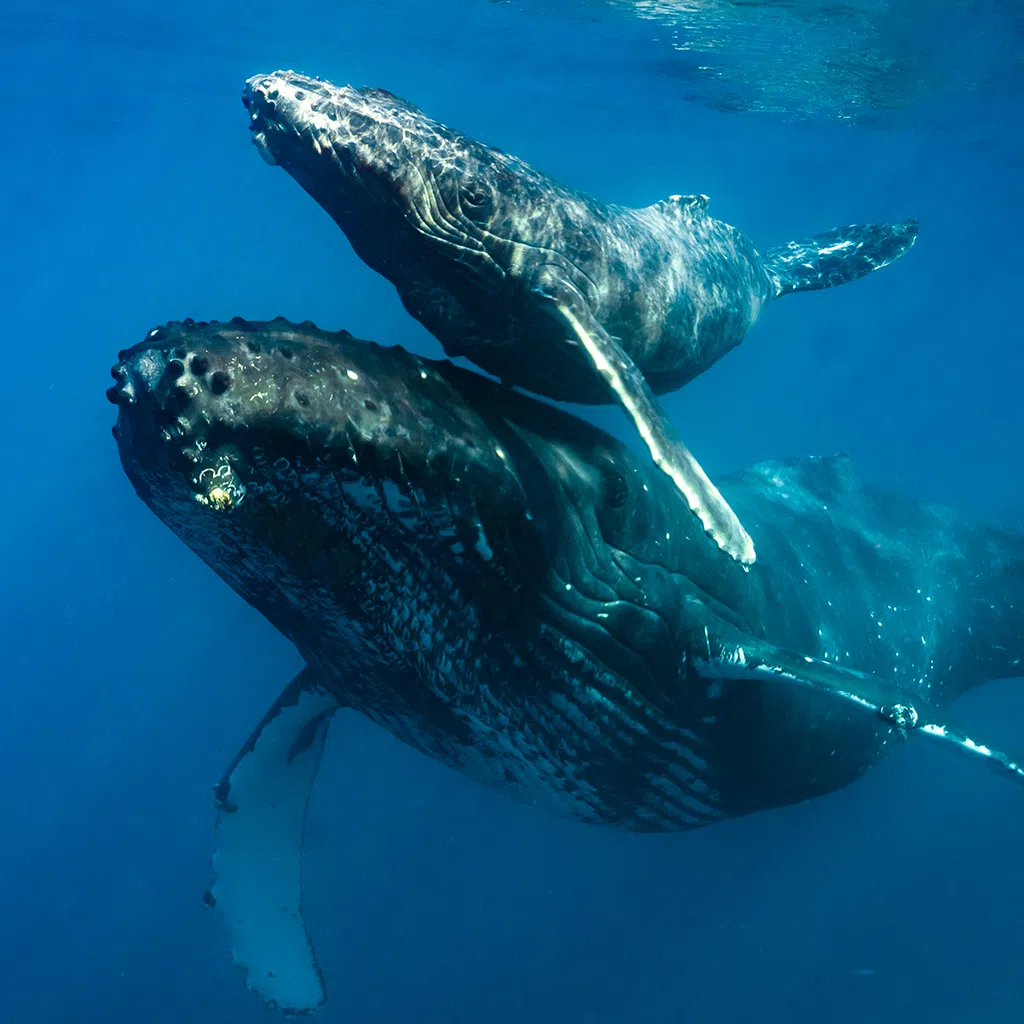
Humpback Whale
Megaptera novaeangliae
The humpback whale is a species of baleen whale. Found in oceans and seas around the world, humpback whales typically migrate up to 16,000 km (9,900 mi) each year. They feed in polar waters and migrate to tropical or subtropical waters to breed and give birth.
Their diet consists mostly of krill and small fish, and they use bubbles to catch prey. They are promiscuous breeders, with both sexes having multiple partners. Orcas are the main natural predators of humpback whales.
Adults range in length from 46-56 ft (14-17 m) and weigh up to 40 metric tons. The humpback has a distinctive body shape, with long pectoral fins and a knobbly head. It is known for breaching and other distinctive surface behaviors, making it popular with whale watchers. Males produce a complex song typically lasting 4 to 33 minutes.

Wedge-tailed Shearwater
Ardenna pacifica
The wedge-tailed shearwater is a medium-large shearwater in the seabird family Procellariidae. It ranges throughout the tropical Pacific and Indian Oceans and breeds on islands off Japan, on the Islas Revillagigedo, the Hawaiian Islands, the Seychelles, the Northern Mariana Islands, and off Eastern and Western Australia.
edge-tailed shearwaters are monogamous, forming a pair bond that lasts for several years. Both sexes undertake a prelaying exodus to build up energy reserves; this usually lasts around 28 days. A single egg is laid, if that egg is lost, then the pair will not attempt another that season.

Octopus
Octopus cyanea
An octopus is a soft-bodied, eight-limbed mollusc of the order Octopoda. The soft body can radically alter its shape, enabling octopuses to squeeze through small gaps. They have a complex nervous system and excellent sight, and are among the most intelligent and behaviourally diverse of all invertebrates.
Maze and problem-solving experiments have shown evidence of a memory system that can store both short- and long-term memory. Young octopuses learn nothing from their parents, as adults provide no parental care beyond tending to their eggs until the young octopuses hatch.
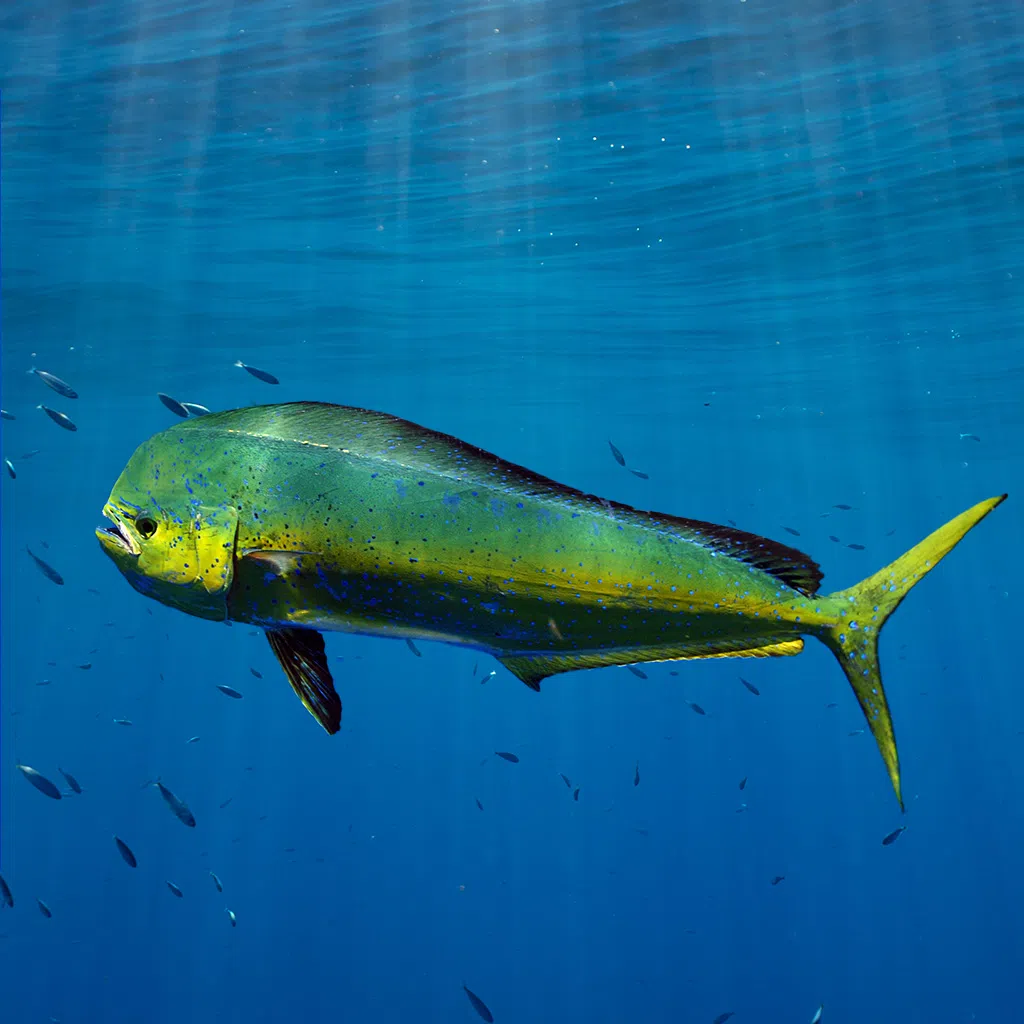
Mahi Mahi (Dorado, Dolfinfish)
Coryphaena hippurus
The mahi-mahi or common dolphinfish is a surface-dwelling ray-finned fish found in off-shore temperate, tropical, and subtropical waters worldwide. Also widely called dorado (not to be confused with Salminus brasiliensis, a fresh water fish) and dolphin, it is one of two members of the family Coryphaenidae, the other being the pompano dolphinfish. These fish are most commonly found in the waters around the Gulf of Mexico, Costa Rica, Hawaii and the Indian Ocean.
Mahi-mahi are highly sought for sport fishing and commercial purposes. Sport fishermen seek them due to their beauty, size, food quality, and healthy population.
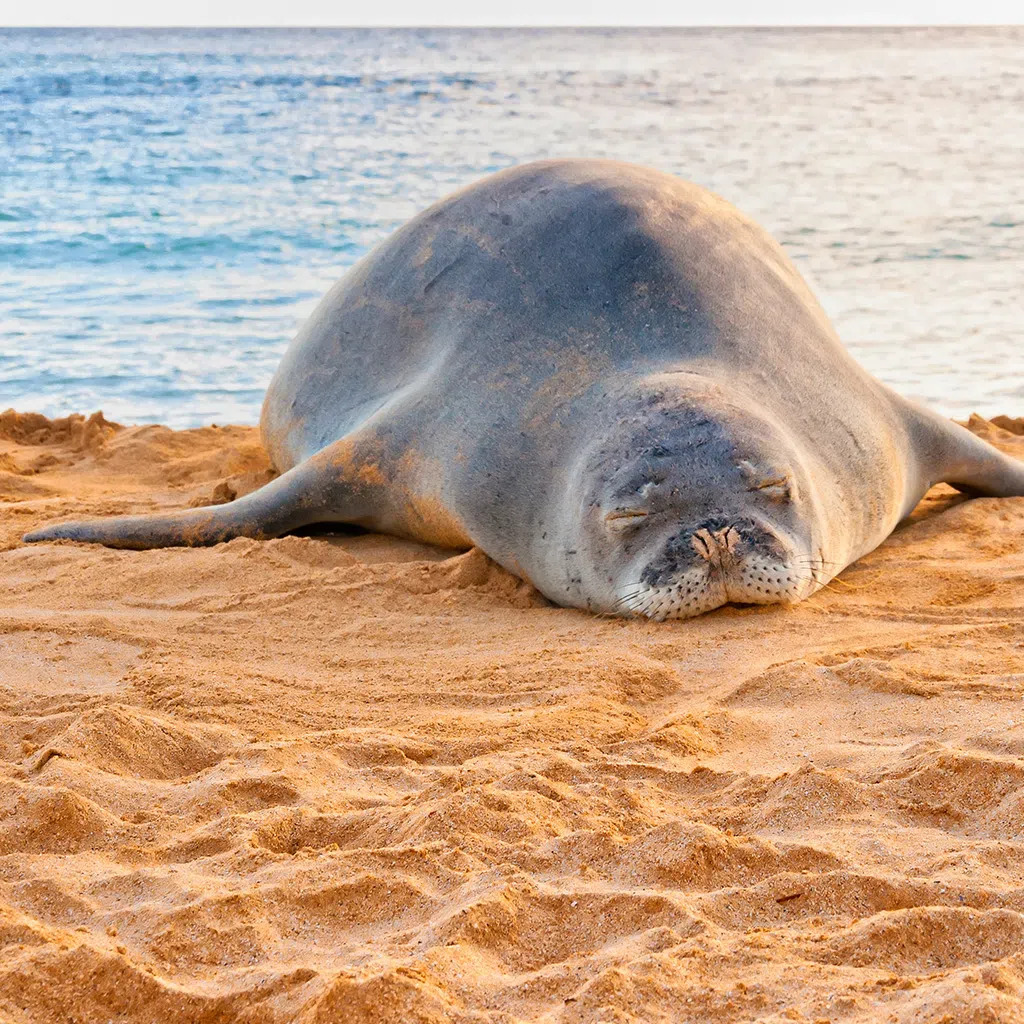
Hawaiian Monk Seal
Neomonachus schauinslandi
The Hawaiian monk seal is an endangered species of earless seal in the family Phocidae that is endemic to the Hawaiian Islands. The small population of about 1,400 individuals is threatened by human encroachment, very low levels of genetic variation, entanglement in fishing nets, marine debris, disease, and past commercial hunting for skins.
Monk seals spend much of their time foraging in deeper water outside of shallow lagoon reefs at sub-photic depths of 300 metres or more.
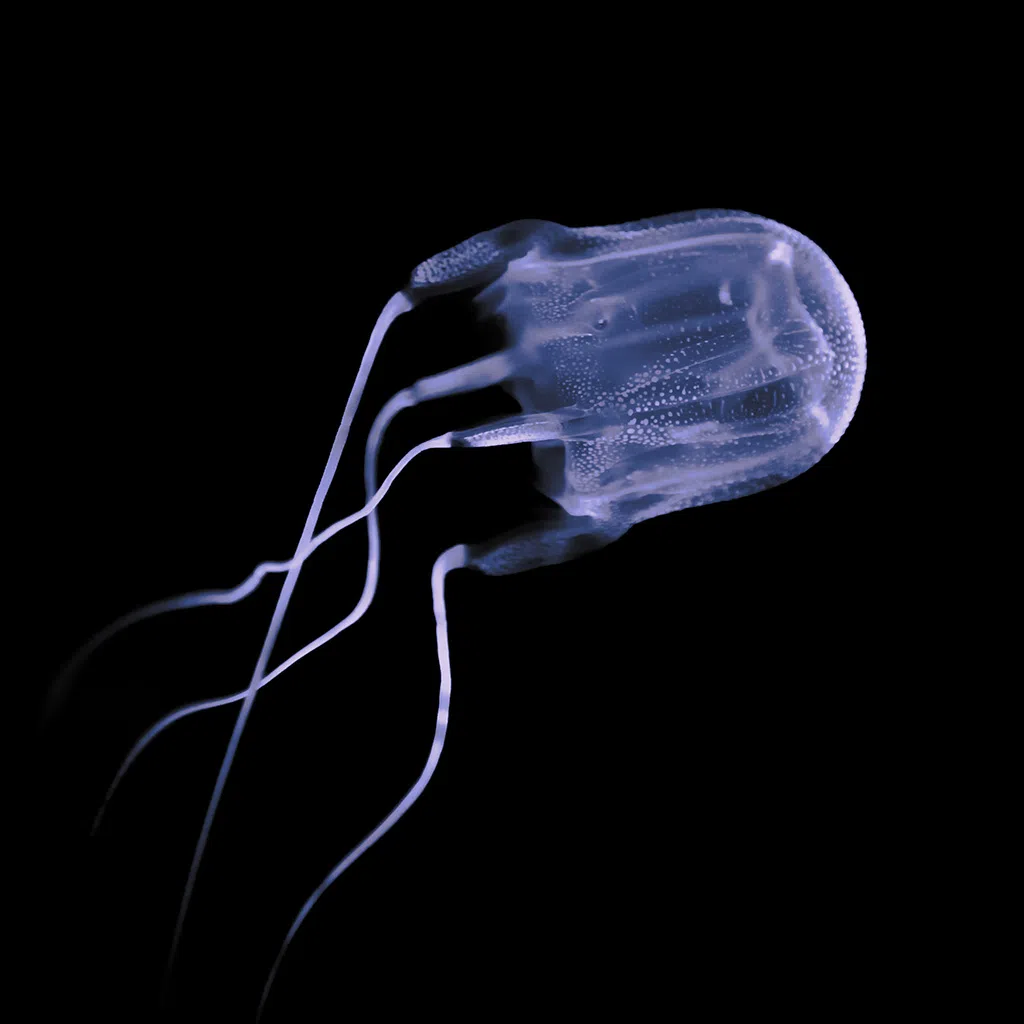
Jellyfish
Jellyfish and sea jellies are the informal common names given to the medusa-phase of certain gelatinous members of the subphylum Medusozoa, a major part of the phylum Cnidaria. Jellyfish are mainly free-swimming marine animals with umbrella-shaped bells and trailing tentacles, although a few are anchored to the seabed by stalks rather than being mobile.
There are a variety of types of jellyfish found in the waters of Hawai'i including the box jelly, moon jelly, and spotted jelly.
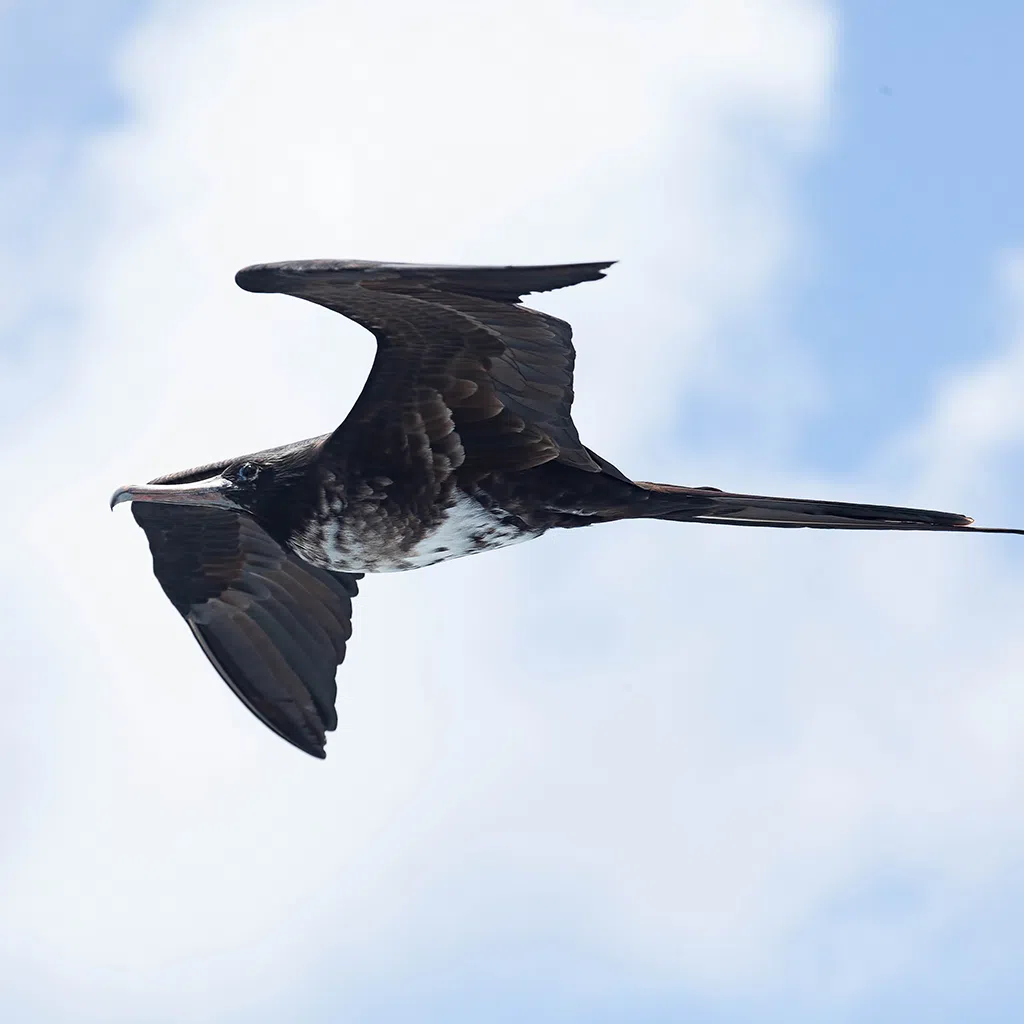
Iwa Bird
Fregata minor
The iwa bird has a wide distribution throughout the world's tropical seas. Hawaii is the northernmost extent of their range in the Pacific Ocean, with around 10,000 pairs nesting mostly in the Northwestern Hawaiian Islands.
It forages in pelagic waters within 50 mi (80 km) of the breeding colony or roosting areas. Flying fish from the family Exocoetidae are the most common item in the diet of the great frigatebird; other fish species and squid may be eaten as well.
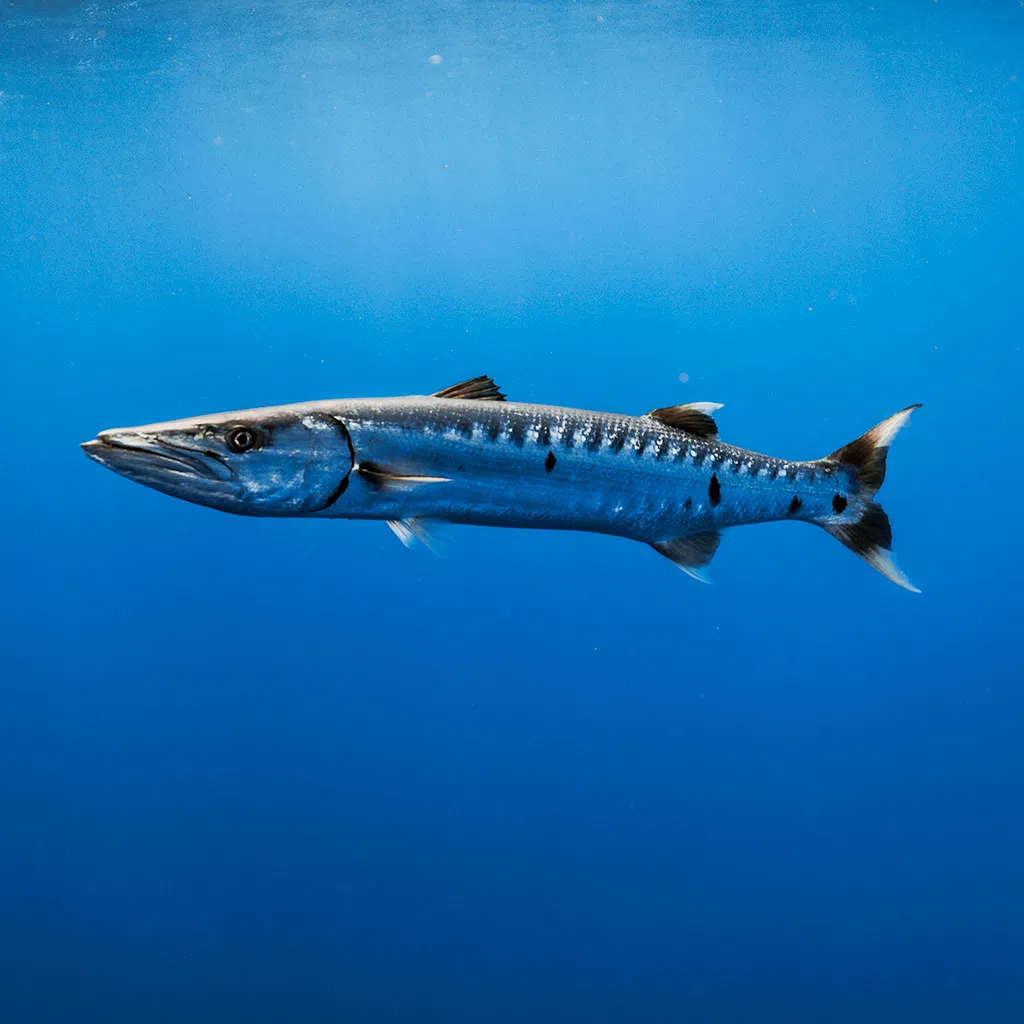
Barracuda
A barracuda, or cuda for short, is a large, predatory, ray-finned fish known for its fearsome appearance and ferocious behaviour. They are opportunistic predators, relying on surprise and short bursts of speed, up to 27 mph (43 km/h), to overtake their prey.
Barracudas are usually found swimming in saltwater searching for schools of plankton-feeding fish. Their silver and elongated bodies make them difficult for prey to detect, and even more difficult to be seen when viewing them head-on.
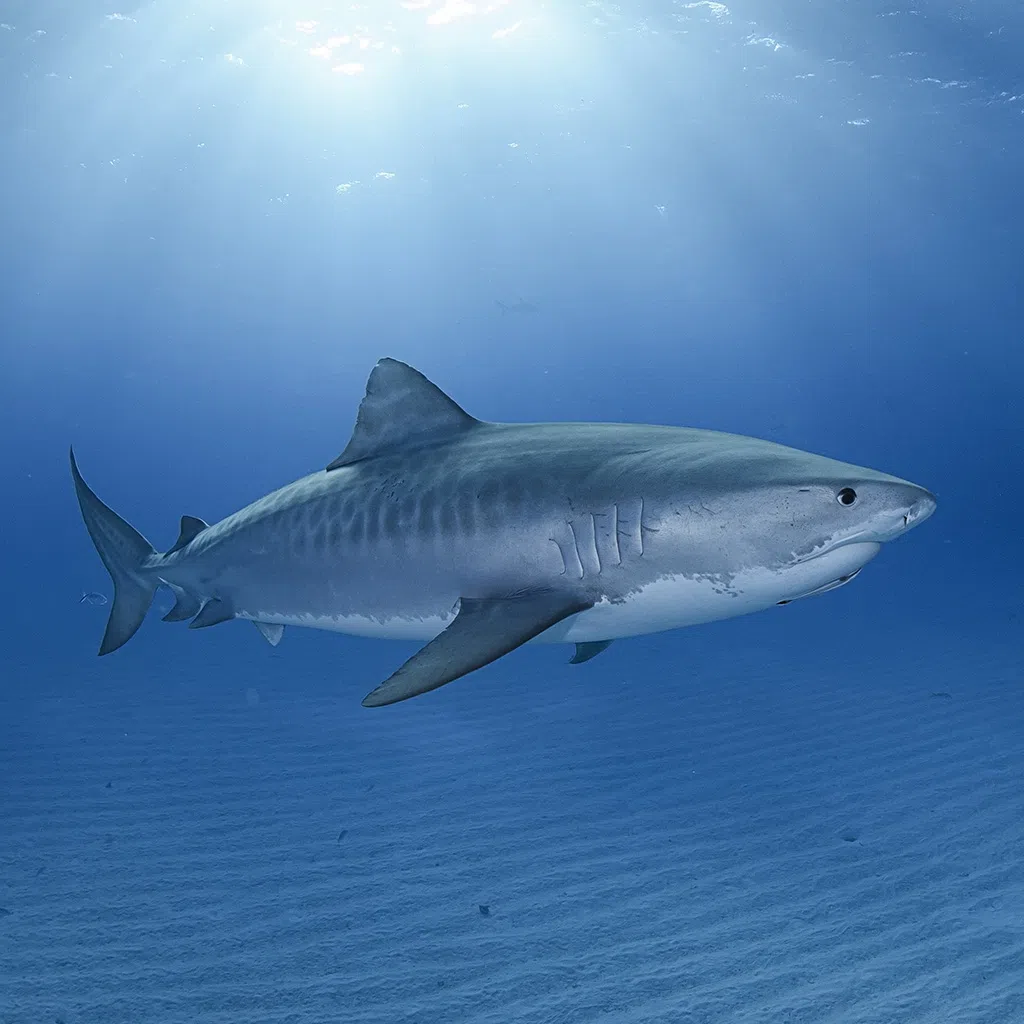
Tiger Shark
Galeocerdo Cuvier
A species of requiem shark, the tiger shark attains length of up to over 16 ft. Found in tropical and temperate waters, especially in central Pacific islands. The name derives from the dark stripes down its body resembling a tiger's pattern.
Often found close to the coast in tropical and subtropical waters throughout the world, its behavior is primarily nomadic, but is guided by warmer currents, it stays closer to the equator throughout colder months.
Attacks by tiger sharks in Hawaiian waters have been shown to increase between September and November, when tiger shark females are believed to migrate to give birth.
Book Your Adventure Today.
Embrace the thrill of open ocean, cage-free shark diving with Hawaii Adventure Diving, the top-rated adventure outfit on the island with a perfect 5-star Google rating. With a passion that extends beyond business, our highly-skilled crew delivers transformative experiences, offering unparalleled service where safety, education, and an unforgettable journey are our hallmarks.
